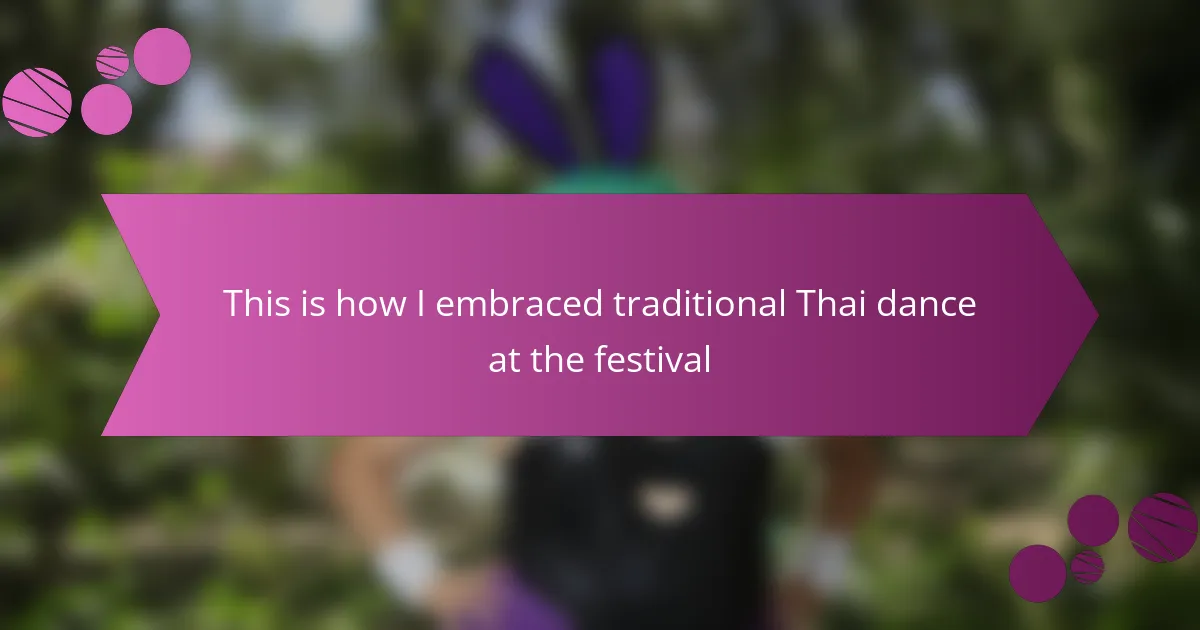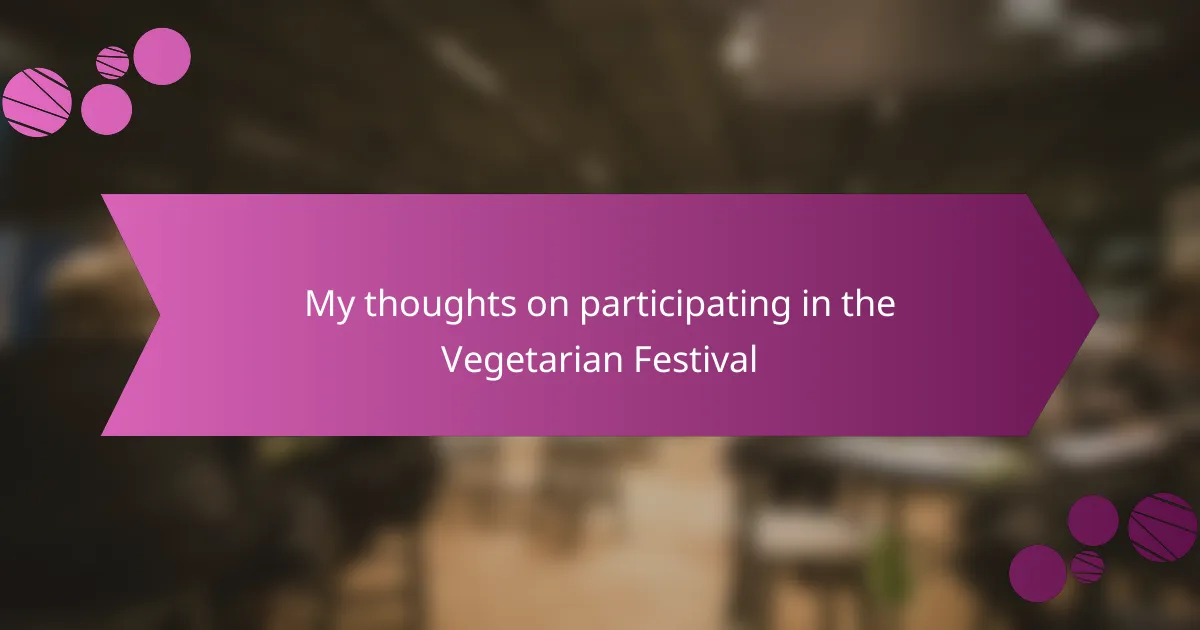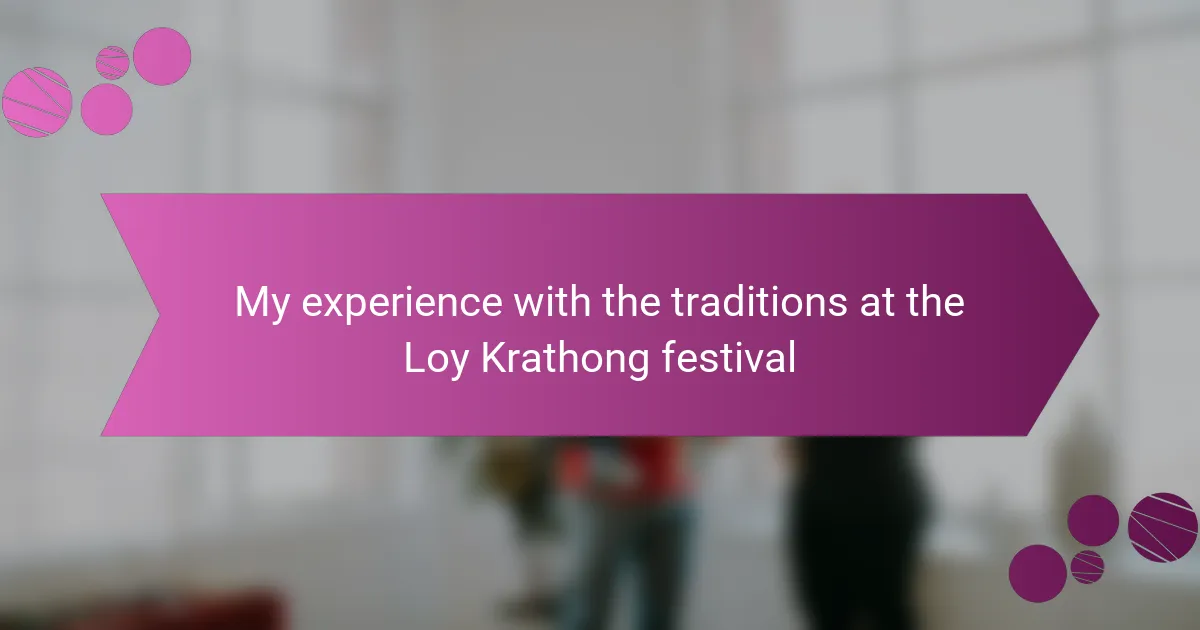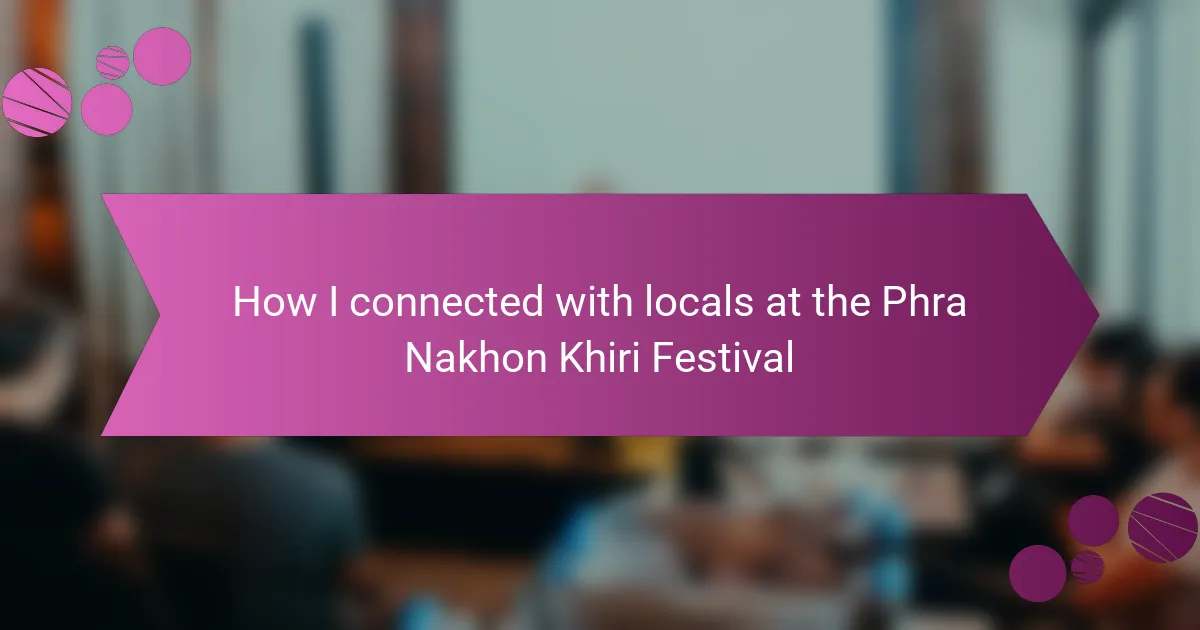Key takeaways
- Thai music festivals celebrate cultural diversity, blending traditional and contemporary music, fostering community connection.
- Traditional Thai dance serves as a medium of storytelling, with movements, costumes, and music deeply rooted in cultural heritage.
- Preparation for participating in festivals enhances appreciation for Thai traditions, providing a transformative personal journey.
- Experiencing traditional dance fosters emotional connections and a sense of pride in honoring Thailand’s rich cultural legacy.
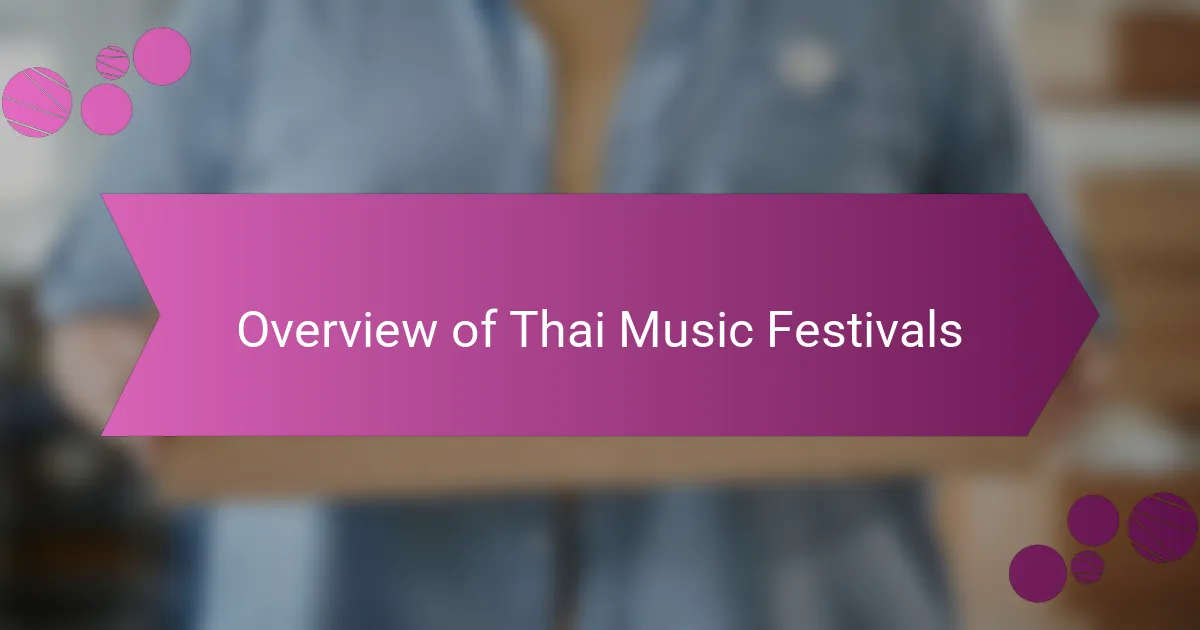
Overview of Thai Music Festivals
Thai music festivals are a vibrant celebration of culture, showcasing a rich tapestry of traditional and contemporary music styles. Having attended several festivals, I can tell you the atmosphere is electric, filled with the joyful sounds of instruments like the khim and ranat. Each event is a unique expression of Thailand’s diverse heritage, uniting people from all walks of life through unforgettable musical experiences.
I remember my first Thai music festival vividly. The blend of music and performance was mesmerizing, especially when the dancers took the stage. Their movements told stories that resonated deep within me, leaving a lasting impression of the beauty and grace of Thai culture.
Here’s a comparison of notable Thai music festivals:
| Festival Name | Location |
|---|---|
| Songkran Festival | Nationwide |
| Pattaya Music Festival | Pattaya |
| Chiang Mai Music Festival | Chiang Mai |
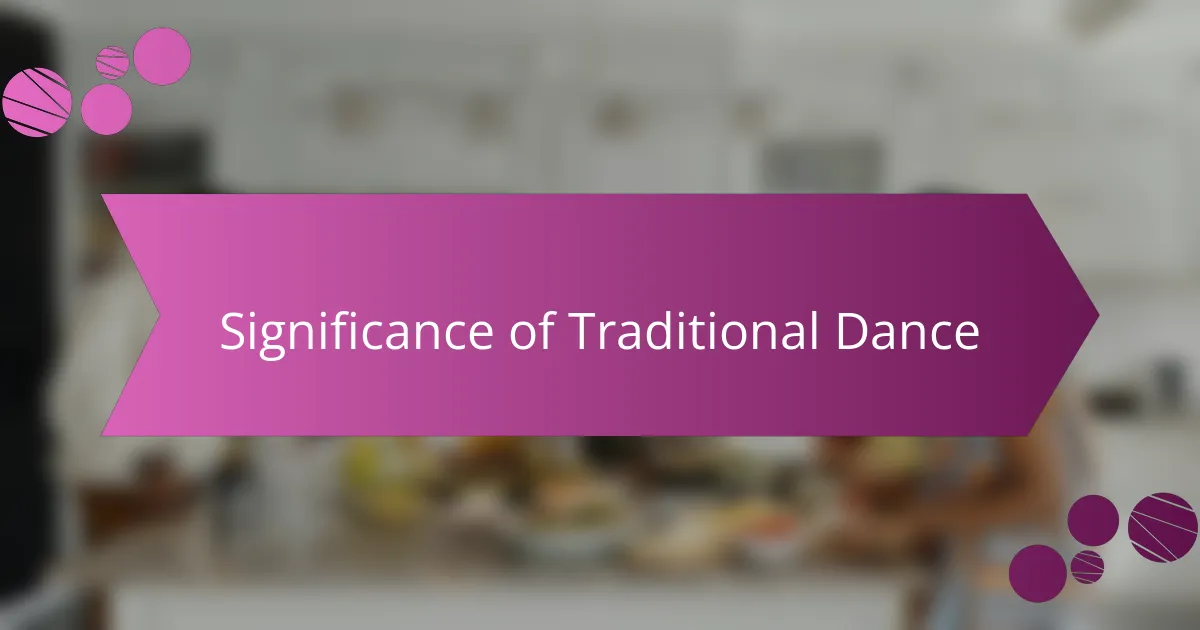
Significance of Traditional Dance
Traditional Thai dance holds a profound significance in showcasing Thailand’s rich cultural heritage. Each movement tells a story steeped in history and tradition, connecting performers with their ancestors. I remember feeling a deep sense of pride as I participated in the dance at the festival, realizing that I wasn’t just performing; I was honoring a legacy.
The intricate gestures and costumes are not merely for aesthetic purposes. They embody spiritual beliefs and reflect the beauty of nature, which I found incredibly inspiring during my time on stage. The rhythm, the music, and the grace of the dance all come together to create an experience that resonates in the heart.
Here’s a quick comparison to highlight aspects of traditional Thai dance versus modern interpretations:
“`html
| Aspect | Traditional Thai Dance |
|---|---|
| Purpose | To honor traditions and express [censured] |
| Movement Style | Graceful and symbolic, follows cultural narratives |
| Costumes | Elaborate, handcrafted, with significant meaning |
| Music | Traditional instruments and melodies root in history |
| Audience Interaction | Often involves community and invites audience participation |
“`
This comparison highlights the heartfelt connection and significance of the traditional art form, showing how it preserves cultural identity while still being a source of joy for both performers and spectators.
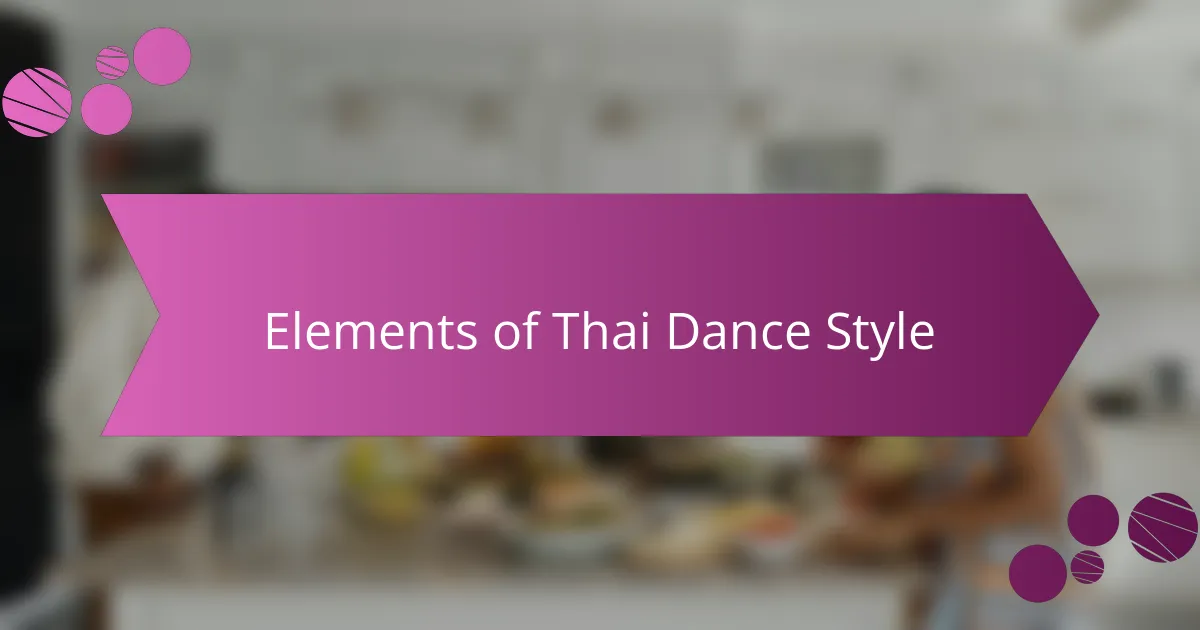
Elements of Thai Dance Style
When I first witnessed traditional Thai dance, I was immediately captivated by its grace and precision. Each movement tells a story, infused with the culture’s rich history and spiritual essence. It’s not just about the steps; it’s about embodying a narrative that connects generations.
The elements of Thai dance are distinctive and intricate, creating a captivating experience for both the performer and the audience. From the elaborate costumes to the expressive hand gestures, every aspect holds meaning. I remember my first performance, feeling the weight of the costume and the rhythm of the music; it was as if the spirit of the dance awakened within me.
- Posture: Dancers maintain a graceful posture, often with a slight arch in the back, emphasizing elegance.
- Hand Gestures: Known as “Mudras,” these gestures express emotions and meanings, much like sign language.
- [censured] Expressions: Dancers use their [censured] expressions to convey the story, with every smile and frown significant to the narrative.
- Costumes: Traditional attire is vibrant and ornate, reflecting the cultural heritage of Thailand, with intricate designs and colors.
- Music: The accompaniment often involves traditional instruments, creating a soothing backdrop that enhances the dance’s emotional impact.
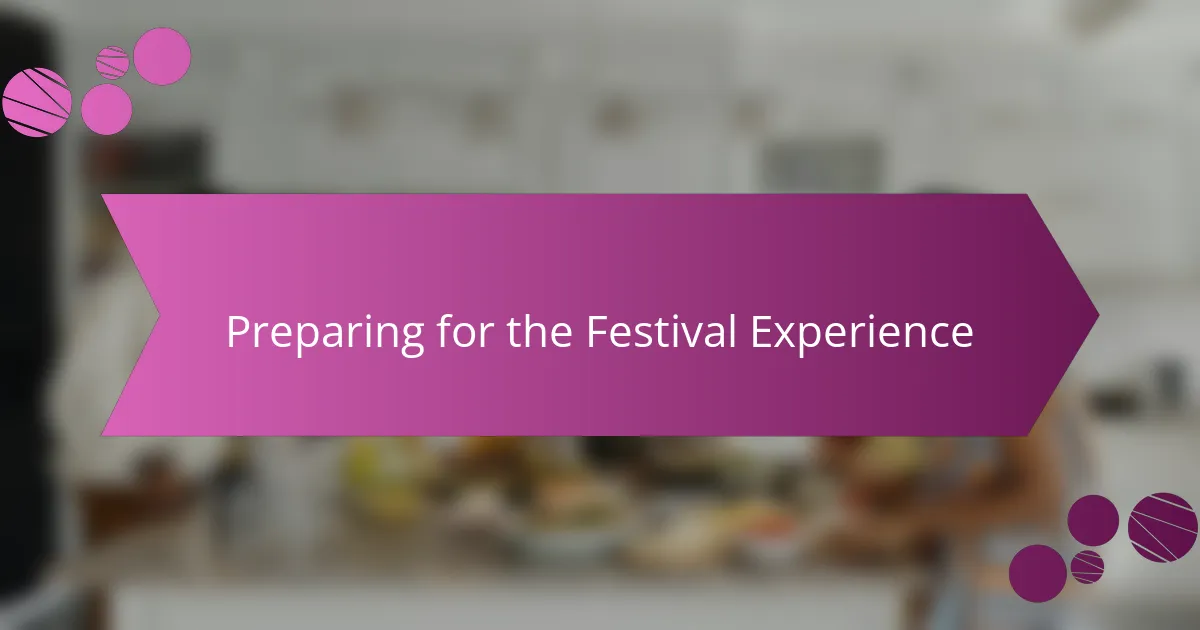
Preparing for the Festival Experience
Preparing for a traditional Thai dance festival is an exciting journey that begins well before the event itself. As I donned my costume, the vibrant colors and intricate designs reminded me of the rich heritage behind each movement. The anticipation of performing in front of an audience exhilarated me — a mix of nerves and excitement coursed through my veins.
To truly embrace the experience, I made sure to prepare thoroughly:
- Research the background and significance of traditional Thai dance forms.
- Select an appropriate costume that reflects the style of dance I would be performing.
- Attend rehearsals to familiarize myself with the choreography and refine my movements.
- Speak with experienced dancers to gain insights and tips on how to engage the audience.
- Practice mindfulness techniques to manage performance anxiety and enhance my emotional connection to the dance.
Every step of this preparation deepened my appreciation for the culture and the art form itself, making the festival experience truly unforgettable.
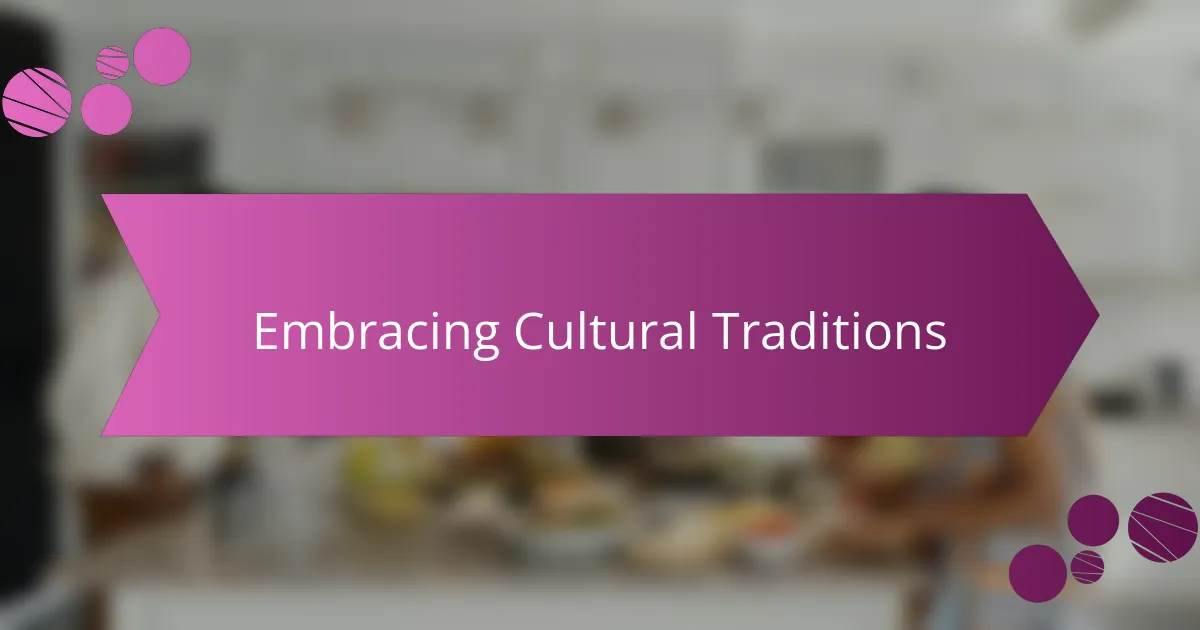
Embracing Cultural Traditions
Embracing cultural traditions can truly be a transformative experience. At the Thai music festival, I threw myself into the world of traditional Thai dance, and it opened my eyes to the depth and beauty of Thailand’s heritage. I still remember the intricate movements and the vibrant colors of the costumes; each performance felt like a narrative that connected me not only to the past but also to the community around me.
It was during one of the workshops that I felt a wave of emotion, realizing how dance serves as a medium of expression and storytelling in Thai culture. The smiles of my fellow participants and the encouragement from experienced dancers made me feel like I was part of something much larger than myself—a celebration of history, art, and unity.
Here’s a simple comparison of different aspects of traditional Thai dance that I found meaningful:
| Aspect | Description |
|---|---|
| Costumes | Elaborate outfits that reflect Thailand’s culture and artistry, often adorned with gold and vibrant colors. |
| Movements | Graceful and precise, every gesture tells a story or portrays an emotion, rooted in centuries-old traditions. |
| Music | Traditional Thai music accompanies the dance, often played with traditional instruments that enhance the emotional depth of the performance. |
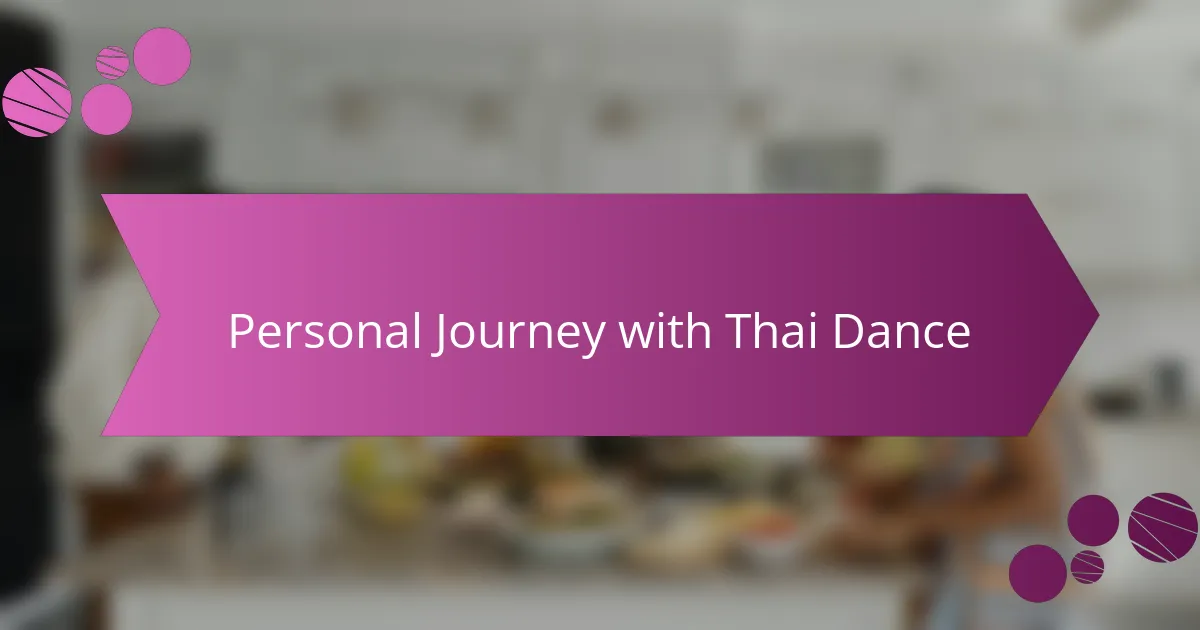
Personal Journey with Thai Dance
When I first encountered traditional Thai dance at the festival, I felt an irresistible pull to its beauty. The intricate movements, vibrant costumes, and the emotional depth conveyed by the performers took my breath away. I remember feeling a surge of excitement as I joined a workshop, eager to learn the graceful gestures that tell stories of Thailand’s rich culture.
Experiencing Thai dance firsthand was transformative. I felt a profound connection to the dancers, as if each movement echoed the heartbeat of the country itself. I struggled at first, trying to master the delicate hand positions and the flowing footwork, but with each practice, I felt more confident and engaged, connecting deeper with the traditions behind every step.
| Aspect | Traditional Thai Dance |
|---|---|
| Emotional Expression | Conveys deep stories and feelings through movement and gestures. |
| Costume Significance | Costumes are ornate and represent cultural heritage, often symbolizing various characters. |
| Learning Experience | Initial struggles can lead to confidence and a stronger connection to Thai culture. |
